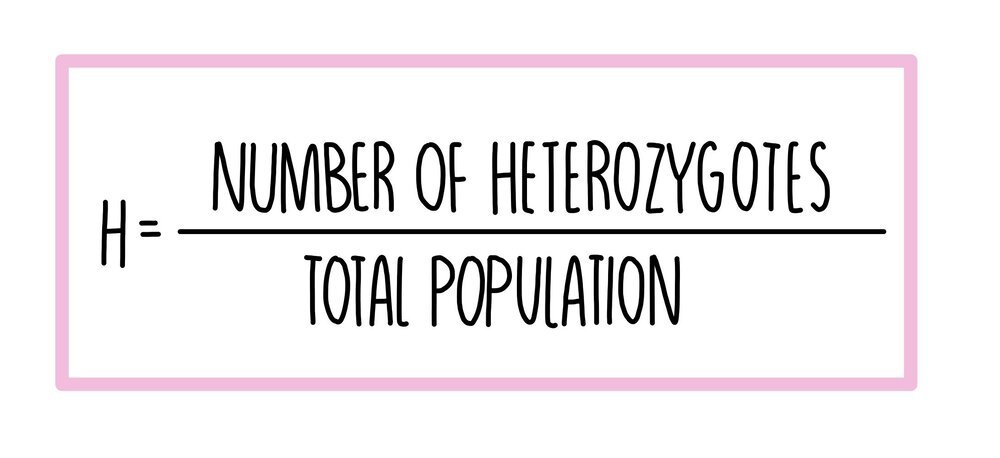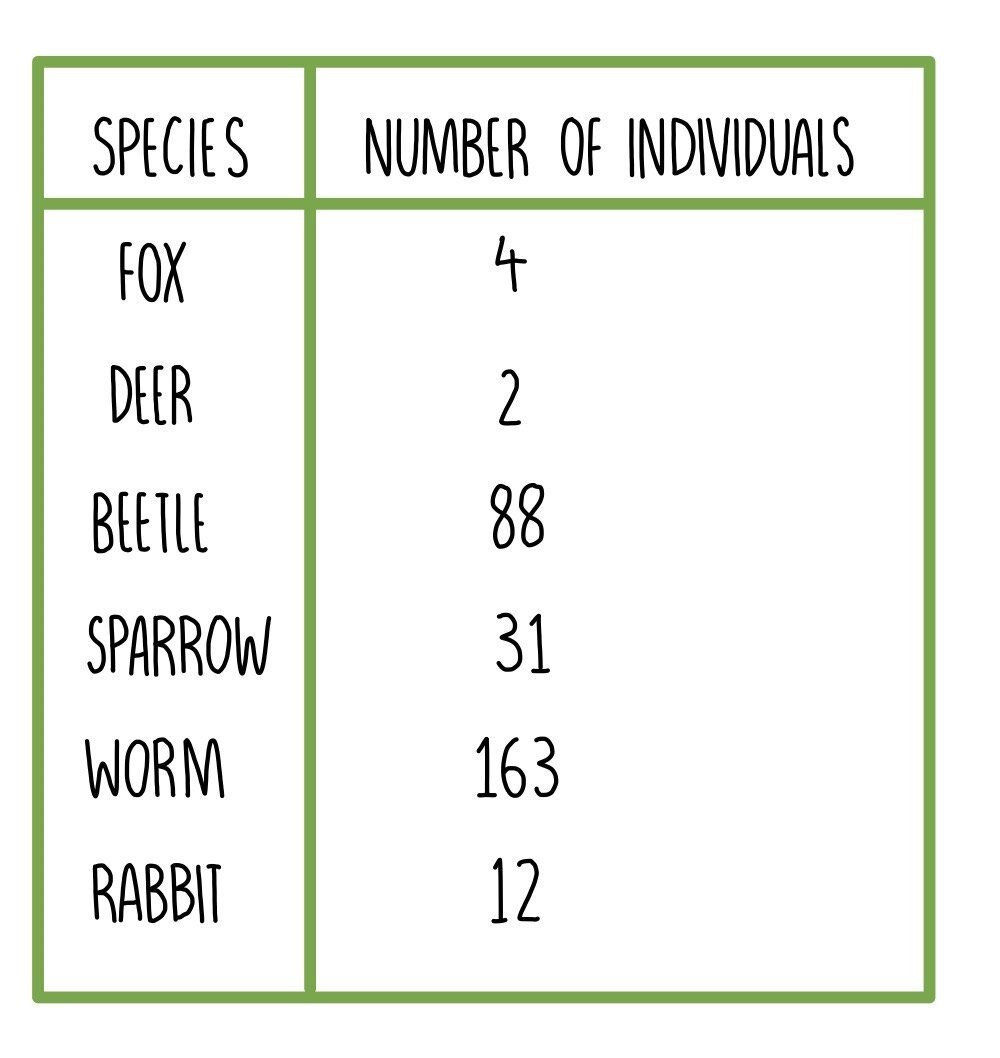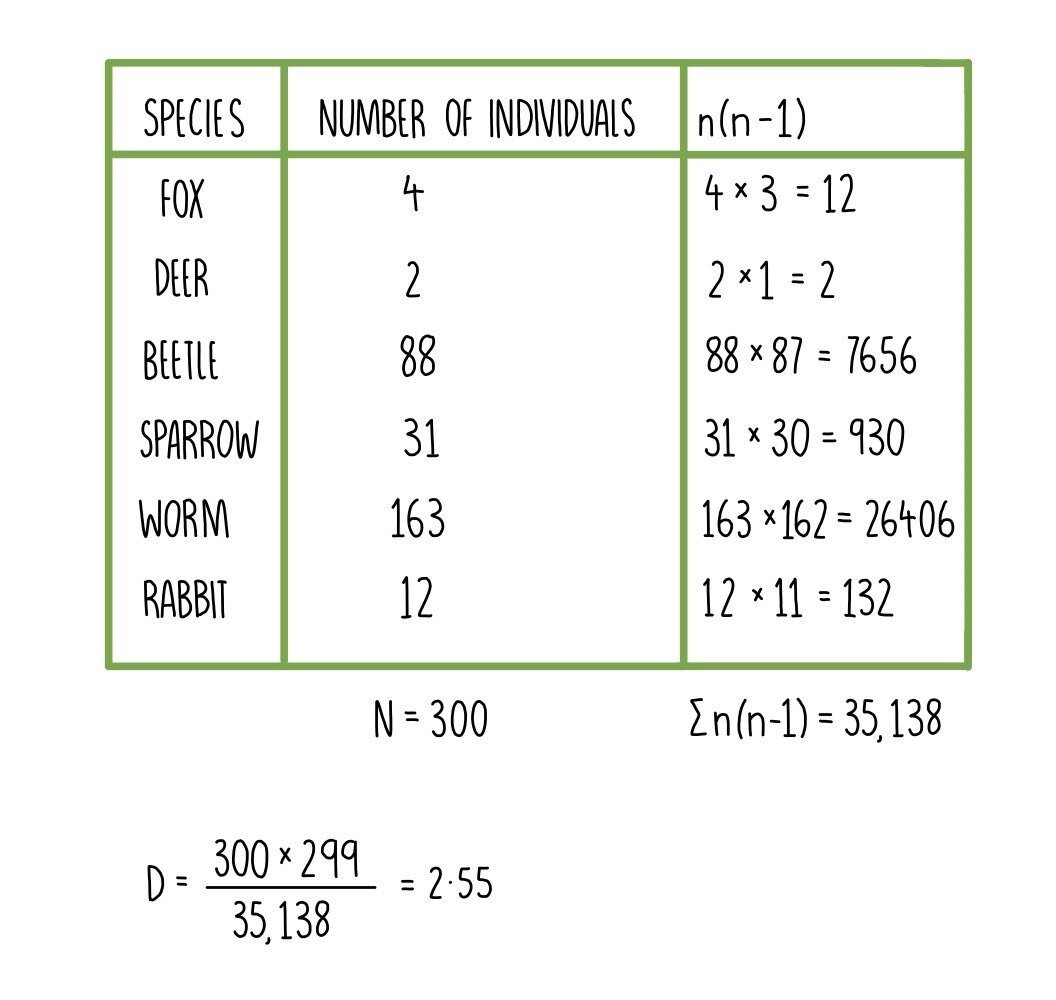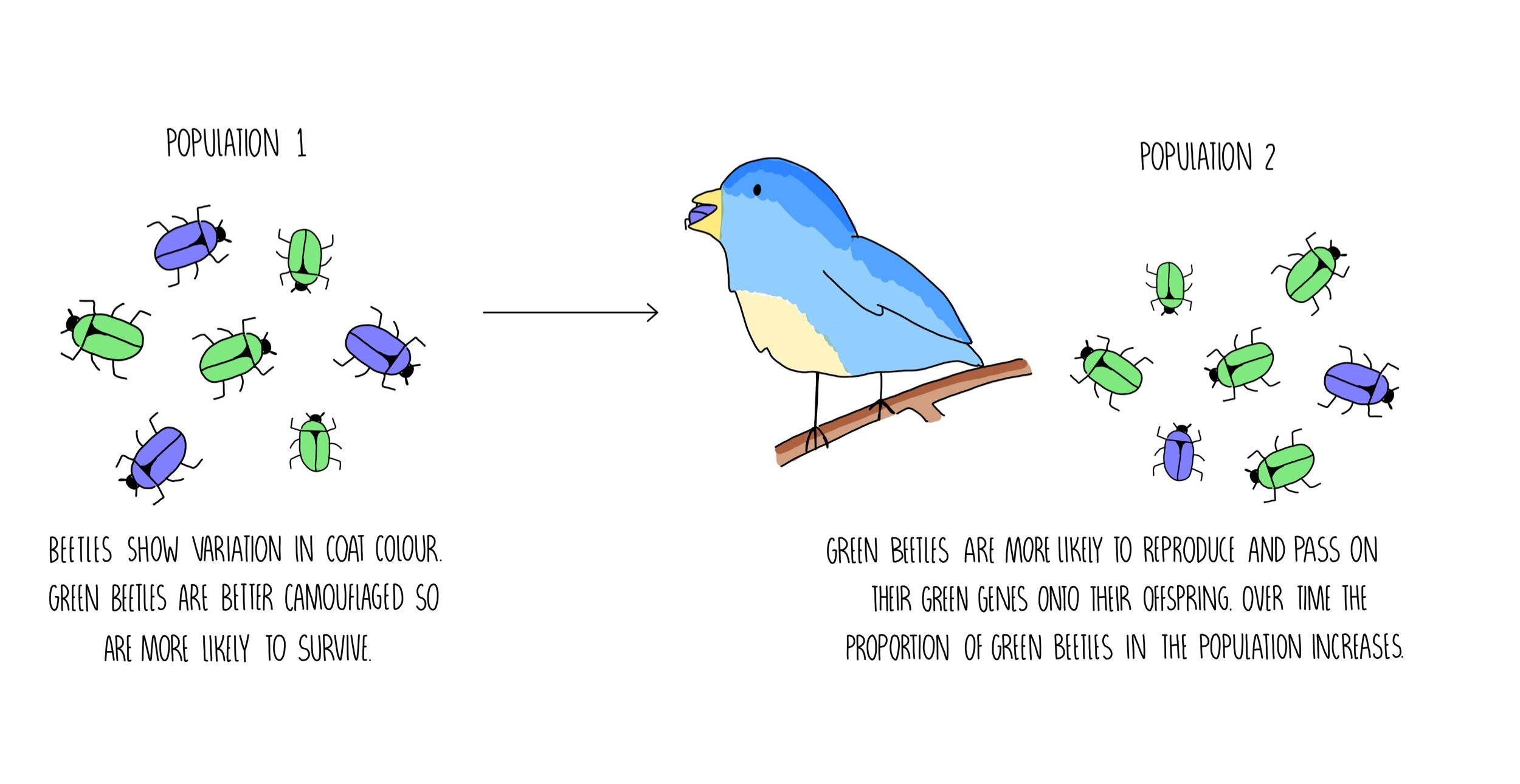Biodiversity
Biodiversity
Biodiversity is defined as the variety of living organisms in a particular habitat. Habitats such as a tropical rainforest, which host an abundance of plant and animal life, have higher biodiversity compared to desert or arctic habitats. Biodiversity can be defined in different ways:
Species diversity - the variety of different species living in an area
Habitat diversity - the number of different habitats within an area
Genetic diversity - the number of different alleles within a population
Endemism
A species is described an ‘endemic’ if it is found in one location only. For example, the Malabar climbing frog is endemic because there is just a single population living in India. Endemic species are vulnerable to extinction because if a natural disaster or some other threat to their survival wipes out the population, there will be no other individuals remaining. This means that conservation programmes are particularly important for endemic species.
Heterozygosity Index
Genetic diversity is a measure of the number of different alleles within a population. It can be measured using something called the Heterozygosity Index which calculates the extent of genetic diversity by determining the proportion of heterozygotes (genotypes with two different alleles) within a population. The higher the number of heterozygotes, the higher the genetic diversity. The Heterozygosity Index is measured using the equation below:
Index of Diversity
Species diversity can be measured by calculating the Index of Diversity (D) of a particular habitat. It takes into account both the number of different species and the abundance of each species. The larger the value for the Diversity Index, the more biodiverse the habitat is. It is calculated using the following equation:
You should be given this formula in the exam so there is no need to memorise it! But you do need to remember what each component of the equation represents. N is the total number of organisms of all species living in that habitat and n is the number of organisms of a single species. Look at the example below to see how the Index of Diversity is calculated:
The table below shows the species present in a woodland habitat and their population size.
When calculating the Index of Diversity, the best way to organise your answer is to add another column to the table to work out n (the population size of each species) x n-1. We will then add all of these values together to work out the sum of n(n-1). We also need to add together the population sizes of all the species to get a value for N, which is then multiplied by N-1. Our N(N-1) value will be divided by the Σn(n-1) value to calculate the Index of Diversity (D). A value of 1 means there is no diversity at all (i.e. only one type of species is living in the habitat). As biodiversity increases, D also increases.
Niche
Within a habitat, different organisms each occupy a particular niche. A niche is the role that an organism plays in the ecosystem and includes its biotic (living) interactions, such as the food it eats and the predators which it needs to hide from, as well as its abiotic (non-living) interactions, such as the gases which it breathes or the sunlight it absorbs. Within the same habitat, different organisms will have different niches. If two different species try to occupy the same niche, one will be out-competed by the other until only one species survives. To increase their chances of survival, organisms will be adapted to the niche that they occupy.
For example, the niche that gorillas occupy includes the fruits and bamboo shoots which they eat, the oxygen they inhale, the carbon dioxide they exhale and the trees that they use for shelter.
Types of adaptation
Living organisms display features (adaptations) which make them suited to their niche and more likely to survive. These adaptations can be behavioural, physiological or anatomical.
Behavioural adaptations are the way that an organism acts which increase its chances of survival. For example, fish often swim in groups called schools for protection and birds migrate south during the winter to find food.
Physiological adaptations are processes which occur within the body of an organism which increase its chances of survival. For example, sloths have a low metabolism which means they can survive on food which contains a low number of calories. Plants such as the deadly nightshade produce a poison which is a defence against being eaten by animals.
Anatomical adaptations are structural features of an organism which increase its chances of survival. For example, polar bears are camouflaged against the snow and cacti have spines to prevent being eaten by animals.
Natural selection
Natural selection is the process by which species evolve. Evolution is the change in allele frequency within a population over time. It can be broken down in the following steps:
There is variation within the population (because different individuals have different alleles). Gene mutations cause new alleles to appear in the population - some of these may be harmful but some may be beneficial.
Organisms with alleles which give them characteristics most suited to their environment are more likely to survive to reproductive age and pass on their genes to their offspring, compared to individuals which do not have the beneficial allele.
A greater proportion of individuals in the next generation have inherited the advantageous allele. These organisms are also more likely to survive and reproduce. They will also pass on the advantageous allele to their offspring.
Over time, the frequency of the advantageous allele increases in the population - this is evolution.
Reproductive isolation and speciation
Speciation refers to the development of a new species. It occurs when two groups of a population become reproductively isolated from each other. Reproductive isolation prevents the transfer of genes (reduced gene flow) between the two groups so natural selection acts separately on the two sub-populations. The frequency of alleles within their gene pools will change differently. Eventually the two groups will become so different that they will no longer be able to breed with each other - they are now classed as separate species.
Organisms may become reproductively isolated from each other due to the following changes:
Behavioural changes - e.g. some organisms may develop new courtship behaviours which are unattractive to the main population
Mechanical changes - e.g. changes to the structure of the genitalia may prevent some organisms from reproducing successfully
Temporal changes - e.g. some plants may begin to produce pollen at different times of the year
Allopatric and sympatric speciation
Speciation can be classed as allopatric or sympatric - allopatric speciation involves organisms becoming geographically separated from one another whereas sympatric speciation occurs in the absence of a geographical barrier.
Allopatric speciation occurs when two groups of the same species become separated by a geographical barrier, such as a mountain range or a stream. The two groups become reproductively separated and cannot exchange alleles with each other. Since the two populations are living in different areas, they will experience different selection pressures so different changes to allele frequencies will occur. The two groups will evolve differently and will form two distinct species.
Sympatric speciation is when speciation occurs in the absence of a geographical barrier. Random mutations may occur within the population which results in behavioural, mechanical or temporal changes (see above) which cause the organisms to become reproductively isolated.
An example of sympatric speciation is polyploidy. Polyploidy occurs when a mutation causes an organism to have multiple sets of chromosomes instead of the usual diploid number - it is much more common in plants than animals. Organisms with different numbers of chromosomes cannot reproduce to form fertile offspring which means that polyploid organisms are reproductively isolated from diploid organisms. If a polyploid organism reproduces asexually then these organisms may eventually develop into a new species.
Hardy-Weinberg Principle
Evolution can be described as a change in allele frequency over time. As organisms become more and more adapted to their environment, the alleles which give rise to favourable characteristics become increasingly common in the population. The prevalence of an allele in the population is referred to as allele frequency which can be given as a decimal (e.g. 0.6) or a percentage (60%).
Allele frequency can be calculated using the Hardy-Weinberg equations. The Hardy-Weinberg principle predicts that the allele frequency will not change between generations. However, it makes the following assumptions:
The population is large
No immigration or emigration is occurring
Mating is random
No new mutations have arisen
No natural selection has occurred
If the allele frequencies change from one generation to the next within a large population, then we know that mutation, migration, non-random mating or natural selection has taken place.
The Hardy-Weinberg principle uses two equations which you’ll need to learn for the exam:
Hardy-Weinberg Principle: Worked Example
Sickle cell anaemia is a recessive disorder which causes red blood cells to misfold into long, thin sickle-shaped cells which are unable to transport oxygen efficiently. Sickle cell anaemia is more prevalent in Africa compared to other parts of the world because people who are heterozygous for the sickle cell gene are less likely to develop malaria, since the malarial parasite is unable to infect the abnormally-shaped red blood cells. In a population of sub-Saharan Africa, 3 in 100 children are born with sickle cell anaemia. Calculate the frequency of the heterozygous phenotype.
First, we need to work out the frequency of the recessive allele (q). We know that the frequency of the homozygous recessive phenotype is 0.03 (3 in 100), which is represented by q2 in the HW equation. We can work out q by square-rooting q2.
Square root of 0.03 = 0.17.Now that we know the frequency of the recessive allele (q), we can work out the frequency of the dominant allele (p) since p + q = 1. To work out p we just need to subtract q from 1.
1 - 0.17 = 0.83.Finally, we can calculate the frequency of the heterozygous phenotype (2pq) by doing 2 x 0.83 x 0.17 = 0.28. This tells us that 28% of the population will have the heterozygous phenotype.
Classification and taxonomy
To make it easier for scientists to identify and study living organisms, each organism is organised into different groups based on their similarities and differences. The grouping of organisms according to their characteristics is called taxonomy. There are eight different taxonomic groups used to classify organisms. The groups are organised in a hierarchy from largest to smallest. The first group, domain, is the most broad category whereas the last group, species, is the most specific category. These groups do not overlap with one another, so an organism which is placed in the kingdom ‘animals’ will not share the same categories as an organism which belongs to the plant kingdom.
It’s useful to use a mnemonic to help you remember the order of the taxonomic groups. The classic one is ‘Dear King Phillip Came Over For Good Soup’ but my favourite is ‘Delicious King Prawn Curry Over Fatty Greasy Sausages’.
Binomial system
In the past, organisms were referred to by local and colloquial names and there were often hundreds of different names used to refer to the same organism. To make things more straightforward, scientists now use the binomial system for naming organisms. This two name system uses first the genus name and then the species name to refer to each organism. The scientific name for human beings is Homo Sapiens since ‘homo’ is the genus name and ‘sapiens’ is the name of our species. Likewise, the scientific name for the chimpanzee is Pan Troglodytes, which makes ‘pan’ the name of the genus and ‘troglodytes’ the name of the species.
Molecular phylogeny
Scientists often use data from molecular phylogeny studies to decide which organisms to place into which categories. Molecular phylogeny is the study of molecules (such as DNA, RNA or amino acids) within an organism. Scientists will first choose a gene which is present in the two organisms that they want to compare and then line up the DNA base sequence or amino acid sequence. By looking at how similar these sequences are, the scientists can determine how closely related the two organisms are. The more differences in the nucleic acid or amino acid sequence, the more distantly related the two organisms and the further back in time they shared a common ancestor.
Scientists are continually discovering new species that we never knew existed. Once molecular phylogeny studies on the organism have been carried out, the data will be shared and evaluated by other scientists in scientific journals, conferences and peer review. Other scientists will repeat the experiment to confirm that they also get the same results. If the scientific community agrees with the findings, then the organism will be officially classified into particular taxonomic groups.
Conserving biodiversity
Over the past few hundred years, biodiversity has decreased because of human activities. Hunting, deforestation and pollution have already caused some species to become extinct. Human beings have a moral duty, along with economic incentives, to maintain biodiversity for future generations - this is mostly done through conservation. Conservation involves the protection and management of endangered species. Zoos carry out conservation work to protect animals from extinction and seedbanks conserve biodiversity by storing seeds of endangered plants. Zoos and seedbanks are also important for educating the public about the importance of conserving biodiversity and valuable scientific research takes place at these institutions, enabling us to learn more about different animal and plant species to help conservation efforts.
Zoos
Zoos can save animals from extinction through captive breeding programmes, where animals are bred in captivity to increase their population size.
Captive breeding is controversial and often ineffective.
Some people believe that it is unethical to keep animals locked up, even if it is for the good of the species, and the fact that zoos are so different from the animals’ natural habitat means that they can struggle to reproduce successfully.
Seedbanks
Seedbanks are places which store a variety of different seeds from different plant species.
They try to store seeds from plants with different phenotypes so that they have a stock of lots of different alleles which may prove useful in the future.
They help protect plants from extinction because if a plant becomes extinct in the wild, the seedbank can grow new plants to replace it from the seeds in its collection.
In order to keep a stock of viable seeds, the seedbank needs to keep conditions cold and dry.
However, seeds do not stay healthy indefinitely, so every so often the seeds need to be planted and new seeds taken from the growing plant.
The reasons seeds are stored rather than fully grown plants are that seeds take up less space and require less maintenance, which makes conservation cheaper because less labour is needed. Growing plants from lots of different parts of the world would require replicating lots of different climates and the plants would be more vulnerable to damage or disease.
Reintroducing organisms into the wild
Sometimes animals bred in captivity or plants grown in seedbanks can be reintroduced into the wild.
Reintroducing organisms into their wild habitat can boost population numbers and protect them from becoming extinct. It will also have an impact on the other organisms in the food chain which prey on these animals.
However, reintroduction can be problematic since animals that have been brought up in captivity haven’t learned how to survive in the wild.
Reintroduced organisms can also bring new diseases into habitats, infecting wild populations.










